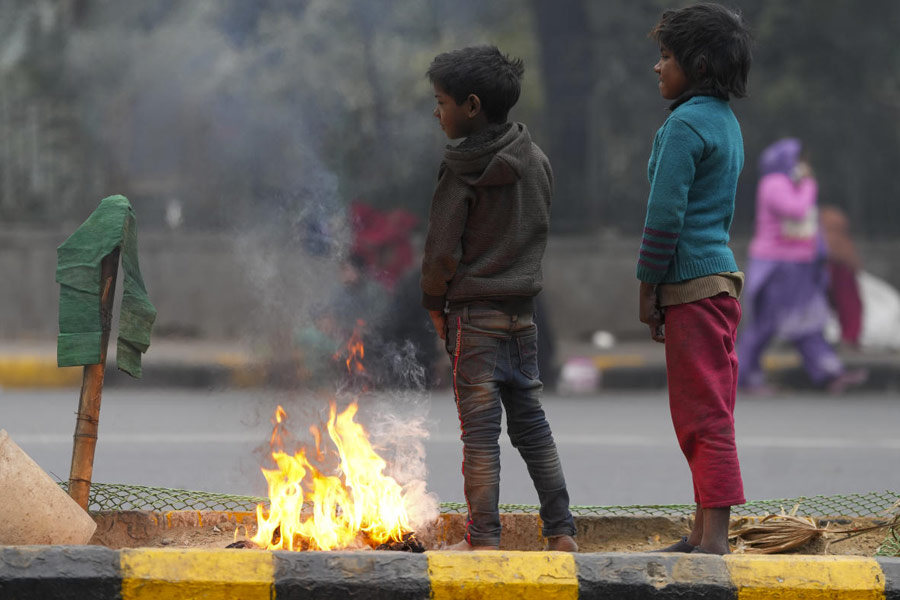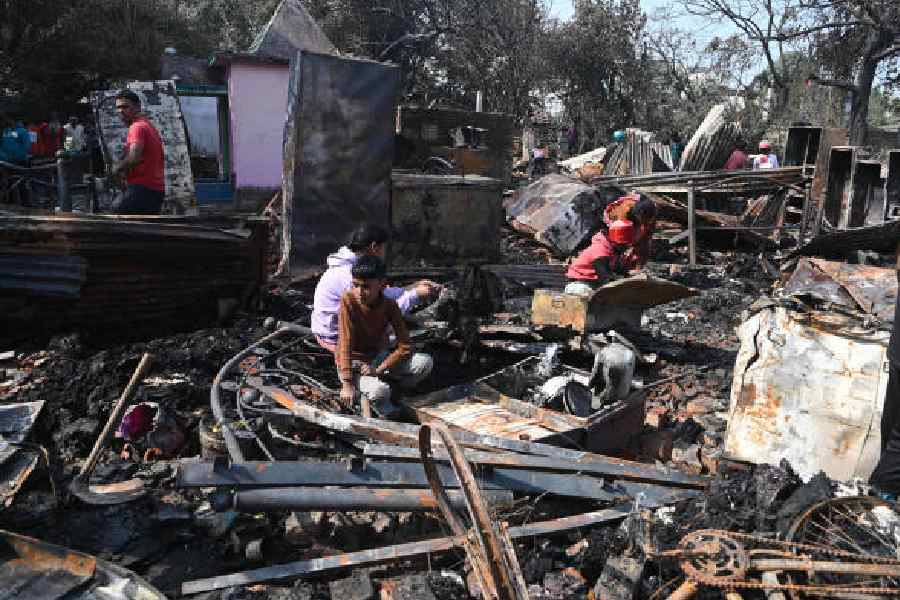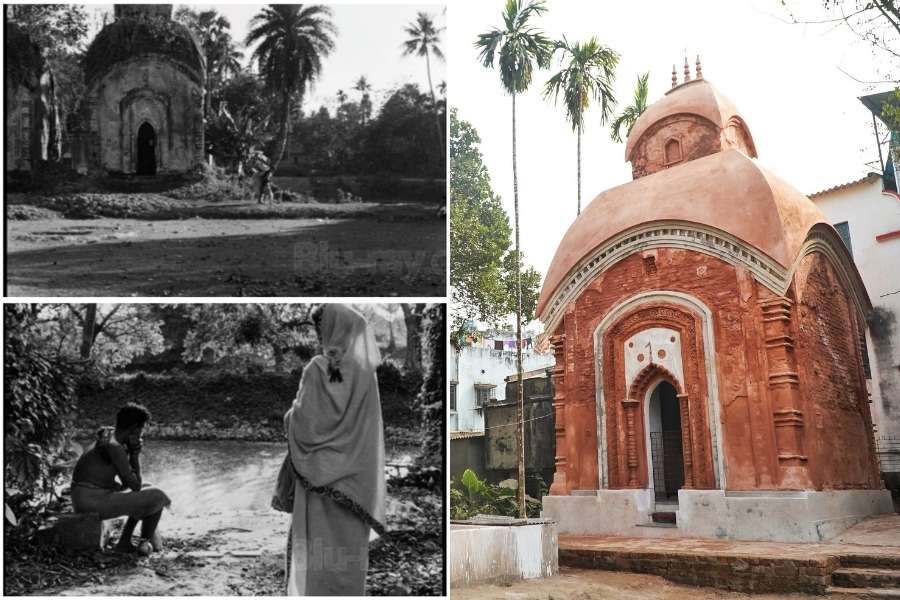 |
Sonepur (Saran), Nov. 28: The elephants arrived as usual but the river was missing.
The centuries-old tradition of elephants being bathed in the Gandak at the crack of dawn on Kartik Purnima to mark the beginning of the Sonepur Mela — Asia’s largest cattle fair — was broken today. The tuskers arrived as usual for the ritualistic bath. But unknown to them and most others, the river had changed its course over the past year and moved away from their familiar spots. (See graphics)
The Gandak originates in Nepal; in India, it becomes a tributary of the Ganga. The marshy land left behind by the changing course of the river was too slippery for the elephants to tread. So they stayed put on the banks and allowed their mahouts to bathe them with water from buckets.
“We took a few elephants to the river yesterday afternoon. But on the way, the legs of some of the animals got trapped in the mud and soil left behind by the river. So, all the elephant owners decided not to take their animals for the ritual holy bath this morning,” said Krish Bihari, an elephant owner from Kushinagar, Uttar Pradesh, who has been coming to the Sonepur fair with his elephants since 1970.
Around 35 elephants and their owners have come for the fair this year — three more than last year. But they were deeply disappointed by the shifting river. Arjun Giri, a resident of Bareilly in Uttar Pradesh and the owner of two 18-year-old elephants, said: “Bringing our elephants to Sonepur Mela and giving them the holy bath on Kartik Purnima has been a tradition in our family for several generations. However, this is the first time that I have not been able to perform the ritual.”
He blamed the authorities for the break in tradition. “I believe that the authorities have turned a blind eye to this important aspect of the fair. They should have made some alternative arrangement to ensure that the age-old tradition continued without any interruption,” Giri said.
Tyagiji, an ascetic who has come to the Sonepur Mela, outlined the historical significance of the ritual of elephant bath. “According to Hindu mythology, Gajendra (the king of elephants) was crossing the Gandak at Sonepur when a crocodile trapped his legs. This led to a fight between the two during which Gajendra prayed to Lord Vishnu for help. Lord Vishnu came to Gajendra’s rescue by taking on the avatar (incarnation) of Baba Hariharnath. He beheaded the crocodile and saved Gajendra,” he said.
“The ritual of bathing elephants on Kartik Purnima commemorates the victory of Gajendra over the crocodile.”
Once gods came down to save elephants. But there is nothing supernatural about the changing course of the river, say experts.
“Like other tropical rivers, Gandak also has a typical movement of lateral shifting. Ganga, Punpun and Kosi also change their course in the same manner,” said R.K. Sinha, the chairman of the State-Level Environment Impact Assessment Authority and a zoology teacher at Patna University.
He added: “Gandak originates in the snowy peaks of the Himalayas in Nepal. It flows from north to south. However, at present, it is shifting laterally from east to the west, causing siltation on its right banks. This is the reason for the creation of the marshy land at Sonepur.
“The river has a natural, lateral-shifting cycle of around 70 years. No human interference is responsible,” Sinha said.
Others said the surprising change in the course of the river was not unnatural either. “I wouldn’t be surprised — given the right conditions, a river can shift within days,” said Manoj Kumar Jain, an assistant professor of hydrology at IIT, Roorkee.
“This is possible in a flat terrain. The fast flow of water may at times cut through soft sediments along its banks and create a new channel for itself,” said Jain, who has tracked a three-km shift of a tributary of the Ganga over several years.
But humans can take pre-emptive action so that people and animals are not adversely affected by the natural phenomena.
“Certain hydro-geological factors are responsible for the change in the course of a river but the resultant adverse impacts can be averted with proper river management. This is absolutely lacking in Gandak’s case. There is no long-term plans either at the Centre or the state-level as a result of which such a situation arises,” said L.P. Singh, director (planning), Ganga Flood Control Commission.
Elephants have been coming to Sonepur since prehistoric times but their sale has been banned since 2002.











